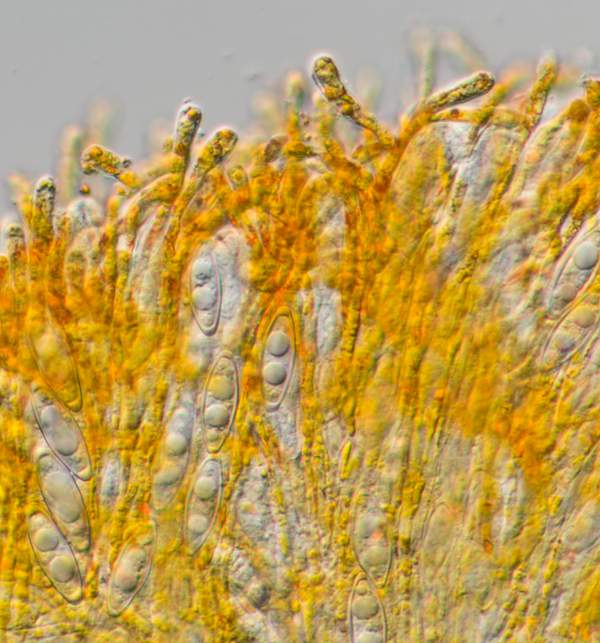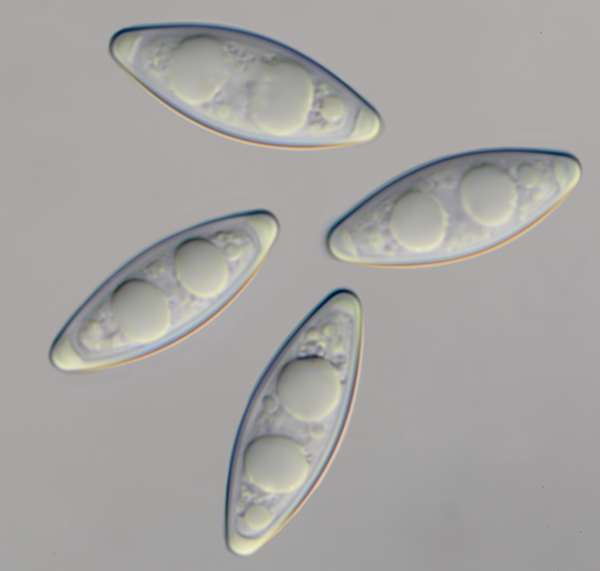Byssonectria fusispora (Berk.) Rogerson & Korf
Phylum: Ascomycota - Class: Pezizomycetes - Order: Pezizales - Family: Pyronemataceae
Distribution - Taxonomic History - Etymology - Identification - Culinary Notes - Reference Sources
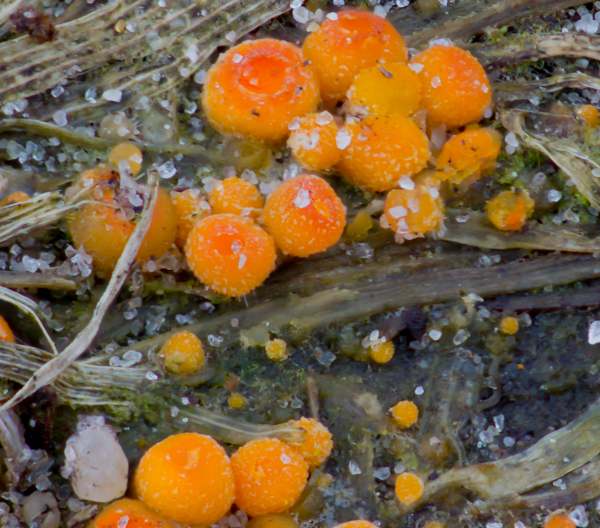
The genus Byssonectria comprises a group of simple disc-like ascomycetes with small fruitbodies and clavate asci. In many of the species each ascus contains eight ascospores, but there are some related species whose asci produce more than 2000 spores. Mostly these little fungi grow on various kinds of dung or rotting vegetation, often on disturbed soil beside woodland paths. Byssonectria fusispora is fairly typical of the genus, producing small orange disc-like fruitbodies
Distribution
An uncommon find in Britain and Ireland, Byssonectria fusispora occurs also throughout most of western Europe, from Scandinavia (where it is a relatively common sight) as far south as France and Italy. There are also references to this species occurring in North America.
Taxonomic history
In 1846 this tiny ascomycete fungus was described by British mycologist Miles Berkeley, who gave it the scientific name Peziza fusispora. The currently accepted scientific name Byssonectria fusispora dates from a 1971 publication by American mycologists Clark Thomas Rogerson (1918 - 2001) and Richard Paul Korf (1925 - 2016).
Synonyms of Byssonectria fusispora include Peziza fusispora Berk., Humaria fusispora (Berk.) Sacc., Leucoloma fusisporum (Berk.) H. Rehm, Octospora fusispora (Berk.) Brumm., and Inermissia fusispora (Berk.) Rifai.
Etymology
The specific epithet fusispora refers to the fusoid (spindle shaped) spores of this ascomycete fungus.
Identification guide
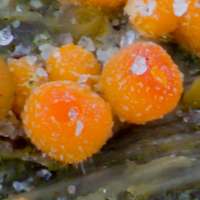 |
Ascocarp (fruitbody)These bright yellow to orange fungi start off as tiny spheres and develop into sessile (stemless) bowl-shaped fruitbodies, typically 1 to 3mm across (exceptionally to 5mm). They have smooth hymenial (spore-producing) upper surfaces, while the infertile (outer edge of the cup-shaped fruitbodies) surface is slightly paler and scurfy. The cups are initially round but flatten as they mature. |
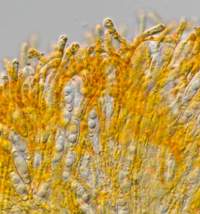 |
Asci220-250 x 12-13µm, with eight spores per ascus; inamyloid. ParaphysesNarrow, somewhat longer than the asci; septate; filled with orange pigment. (Paraphyses are structures of sterile tissue between the asci on the hymenial surface.) |
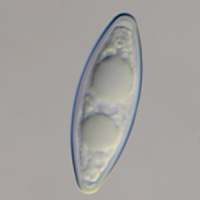 |
SporesFusoidal (spindle shaped) with rounded ends, smooth, 17-24 x 8-10µm; hyaline; each containing two large oil drops and usually also several smaller ones. Spore printWhite. |
Odour/taste |
Not distinctive. |
Habitat & Ecological role |
Saprobic, in groups on well-rotted straw, animal droppings and occasionally on soil having high nitrogen levels from animal urine; also colonising burn sites |
Season |
Late winter and spring. |
Similar species |
Several other ascomycetous disc fungi also colonise animal dung and decaying vegetation. Few can be identified from macroscopic features alone, and so microscopic examination of asci, spores and other cell structures is usually necessary. |
Culinary Notes
Toxicity uncertain, but these cup fungi are far too small to be of any culinary interest.
Reference Sources
Dennis, R.W.G. (1981). British Ascomycetes; Lubrecht & Cramer; ISBN: 3768205525.
Breitenbach, J. & Kränzlin, F. (1984). Fungi of Switzerland. Volume 1: Ascomycetes. Verlag Mykologia: Luzern, Switzerland.
Medardi, G. (2006). Ascomiceti d'Italia. Centro Studi Micologici: Trento.
Dictionary of the Fungi; Paul M. Kirk, Paul F. Cannon, David W. Minter and J. A. Stalpers; CABI, 2008
Taxonomic history and synonym information on these pages is drawn from many sources but in particular from the British Mycological Society's GB Checklist of Fungi.
Acknowledgements
This page includes pictures kindly contributed by David Kelly.
Fascinated by Fungi. Back by popular demand, Pat O'Reilly's best-selling 450-page hardback book is available now. The latest second edition was republished with a sparkling new cover design in September 2022 by Coch-y-Bonddu Books. Full details and copies are available from the publisher's online bookshop...
